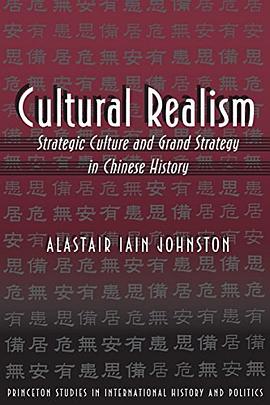Cultural Realism
内容简介
Cultural Realism is an in-depth study of premodern Chinese strategic thought that has important implications for contemporary international relations theory. In applying a Western theoretical debate to China, Iain Johnston advances rigorous procedures for testing for the existence and influence of "strategic culture."
Johnston sets out to answer two empirical questions. Is there a substantively consistent and temporally persistent Chinese strategic culture? If so, to what extent has it influenced China's approaches to security? The focus of his study is the Ming dynasty's grand strategy against the Mongols (1368-1644). First Johnston examines ancient military texts as sources of Chinese strategic culture, using cognitive mapping, symbolic analysis and congruence tests to determine whether there is a consistent grand strategic preference ranking across texts that constitutes a single strategic culture. Then he applies similar techniques to determine the effect of the strategic culture on the strategic preferences of the Ming decision makers. Finally, he assesses the effect of these preferences on Ming policies towards the Mongol "threat."
The findings of this book challenge dominant interpretations of traditional Chinese strategic thought. They suggest also that the roots of realpolitik are ideational and not predominantly structural. The results lead to the surprising conclusion that there may be, in fact, fewer cross-national differences in strategic culture than proponents of the "strategic culture" approach think.
......(更多)
作者简介
Alastair Iain Johnston is Assistant Professor of Government and teaches Chinese foreign policy and international relations at Harvard University.
......(更多)
目录
List of Figures and Tables
Preface
Ch. 1 Strategic Culture: A Critique 1
Ch. 2 Some Questions of Methodology 32
Ch. 3 Chinese Strategic Culture and the Parabellum Paradigm 61
Ch. 4 Chinese Strategic Culture and Grand Strategic Preferences 109
Ch. 5 A Return to Theory 155
Ch. 6 The Parabellum Paradigm and the Ming Security Problematique 175
Ch. 7 Chinese Strategic Culture and Ming Grand Strategic Choice 216
Ch. 8 Conclusion 248
Appendix A: Coding Procedures 267
Appendix B: Terms Used to Describe Legitimate Actions Directed at an Adversary 270
Appendix B: Terms Used to Describe Outcomes of Actions against an Adversary 273
Appendix C: Map of Northern Border Areas in the Ming Period 274
References 275
Index
......(更多)
读书文摘
......(更多)






